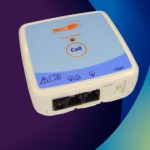How can you be supported to live alone with epilepsy?

Epilepsy is a
common condition, with around 625,000 people in the UK believed to have it –
about one in 107 people. This condition, which can begin at any age, affects
the brain, with a risk of frequent seizures.
It is therefore
understandable that great numbers of people with epilepsy will wish to know how
they can live as independently as possible, which may or may not involve living
alone.
The good news is
that many people with epilepsy do, indeed, live alone, and are able to achieve
a high standard of independent
living. However, there are certain factors that you will need to bear in
mind, and lifestyle changes that you may wish to implement, to best ensure your
safety in the event of a seizure.
Below, we have
outlined some of the steps that you might take.
Adopt a
realistic perspective on what you can and cannot do
The situation of
any given person living with epilepsy might be quite different to another
person’s, with regard to their all-round health, lifestyle, and day-to-day
needs.
Such factors as
the type, frequency, and severity of one’s seizures, as well as the
aftereffects of a seizure, and other neurological challenges, may also greatly
impact on any particular individual’s ability to live alone and independently
with epilepsy.
So, it is of the
utmost importance to carefully consider your own circumstances and requirements
when you are seeking to achieve independent living with epilepsy. You will need
to think about what will be possible and safe for you.
For instance,
you may initially aim to live alone with epilepsy. However, you might
ultimately decide to live in a house-share if you are not already doing so, if
you judge that this could provide vital extra support.
Adjust your
living area and lifestyle
Even if you do
ultimately live alone with epilepsy, there are other arrangements that you
could make to help ensure you are suitably supported.
These
arrangements might involve having certain trusted relatives, friends, and/or
neighbours regularly checking on you, perhaps giving them a key or sometimes
having your doors unlocked when you are at home, so that someone can reach you.
There are also
relatively subtle changes that you could make to your home environment to lower
your risk of physical injury in the event of you suffering a seizure. These
adjustments could include the placement of padding on sharp corners and the use
of non-slip carpets, as well as the removal of any clear trip hazards to help
“fall-proof” your space.
Consider the
technology that will assist your independent living aspirations
With solutions
such as sleep activity and seizure monitors – connected to smartphones and
smartwatches – coming on stream and gaining in sophistication, there are
certainly options available that could make it easier for you to live alone
with epilepsy.
By browsing our
website at Epilepsy Solutions, you can become more familiar with these
solutions and platforms, so that you can assess which ones might represent the
best match to your own circumstances and needs.
For the product
advice and guidance that will help you with this process, or a loved one with
epilepsy who seeks to achieve independent living, please feel free to contact
us.





